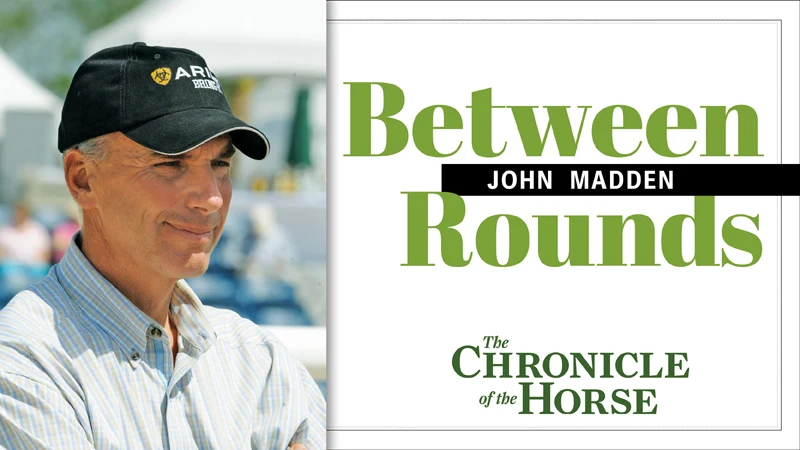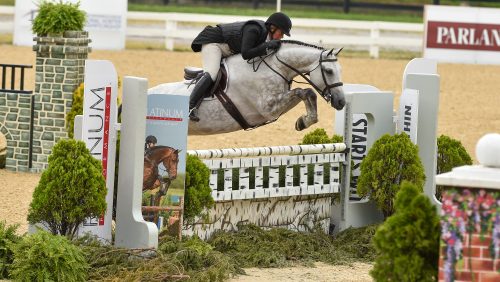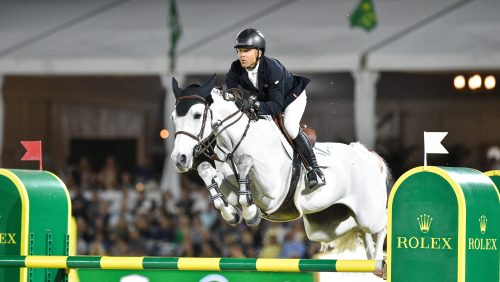Our columnist hopes to help improve, rank and rate competitions from grassroots to international.
In 2008, I was asked by the Fédération Equestre Internationale Jumping Committee to lead a working group to limit the number and improve the quality of the FEI World Cup qualifiers in North America.
At the start, we were instructed to decrease the number of qualifiers in North America, which we considered a huge challenge. How does one decide which events stay and which ones go?
Our first step was to ask FEI officials to take a step back and give us proper time to develop a fair and reasonable way to address the first question before cutting qualifiers. They agreed with our proposal. So the next step was to work out a way to eventually limit the number of competitions and at the same time improve them to a point that the FEI would feel compelled to spread Rolex sponsorship money to North America.
Our solution? To evaluate and score each event on specific criteria, generate a numeric score and then make recommendations to the FEI as to which events continue and which fall by the wayside. This method is, I think, a good one, as it doesn’t impose an arbitrary number of events to hold in North America, but rather guides events as to how to improve and build the World Cup brand.
The long and short of it is that each event’s destiny is in its own hands, and we will have met the FEI’s goal of improving the World Cup brand in North America. And with stronger leagues, the likelihood of North American qualifiers receiving Rolex funding—as all of the Western European qualifiers do— increases. (Currently, North American organizers receive no funding from the FEI to host qualifiers.)
The Process
The Working Group began by sending representatives to each qualifier in the fall of 2009. In December, we held a workshop in Cazenovia, N.Y., to evaluate our progress and plan for the balance of the 2009-2010 season.
The workshop was chaired by marketing specialist Carl Spencer and attended by myself, Sally Ike, Rich Fellers, David Distler, Frank Chapot, Bob Henselwood, Vinton Karrasch and Maria Cortez. We came up with three important stakeholders in the sport: competitors (owners, riders, trainers, grooms, etc.), fans (public, media and enthusiasts) and the sponsors. We believe that the needs of each of these stakeholders must be met equally.
ADVERTISEMENT
The next step was to revise the evaluation form used during the fall so that it asked all of the right questions. And then, and most importantly, develop a system by which the data could be weighted appropriately by giving each area a value (for example, it’s obvious that excellent footing is more important than refreshments in the press center).
It’s also important to note that this evaluation had to measure all aspects of the event from footing to food service, restrooms to VIP amenities, parking to prize money, press, advertising, entertainment, rider support, rule compliance, ambiance, hotels, entry fees and sponsor value. These are just a few of the areas evaluated along with many others.
The evaluation form needed to be easy to use and specific in the questions asked so that events could be compared equally. The end result would be that the strongest events from the viewpoints of the competitors, fans and sponsors alike would attain the highest scores. Mr. Spencer has been a huge help in accomplishing this goal.
All of the managers holding World Cup qualifiers are given the evaluations beforehand so they know exactly what will be measured. This, we feel, gives each a chance to gain a high score and is completely transparent.
Proper, thoughtful, objective evaluation of show jumping competitions can be a solution to many of our problems in quality, growth and the economic sustainability of our sport. It’s fundamental to have this appraisal. U.S. Equestrian Federation officials know this too and have been helpful. FEI officials know it too and have promised funding for the project.
The Mileage Question
So what does this mean to you?
The hope is that one day our Federation can employ these practices for all shows. In the end, our hope is that these evaluations will not only give a score but also report weaknesses and areas of improvement.
Data collection could potentially play a big part in solving the date protection problems that now exist at all levels with the mileage rule. Currently, we use prize money to rate shows. In my opinion, that’s like using a sledgehammer to adjust a wristwatch. It’s been obvious to all involved in our sport for years that the mileage rule has not encouraged USEF shows to strive to better themselves. Instead, the trend has been for management, in most cases, to rest on the safety of knowing they have a monopoly in their area, without striving to improve.
ADVERTISEMENT
We’ve heard a lot of arguments and suggestions to adjust or eliminate the mileage rule, and I think that this program addresses it from another side. Why not start by seeing how good the shows really are and then figure out which and what we really want to protect?
I also think that while the date protection (mileage rule) is very much flawed and hasn’t worked, we can agree that there should be protection for certain established shows. If we do feel that there should be some level of protection, we need to find a way to decide on which ones should be protected. Our current show rating system is much too crude—the differences between many shows of the same rating are enormous.
Making rules and show standards is fine, but then we have to witness and measure the compliance.
Shows like Devon (Pa.), which did such a great job improving the footing, should benefit from that investment in a real way. Shows that meet minimums as opposed to striving for excellence should be penalized with bad scores. Competitors, sponsors and spectators considering which shows to be involved with should have more than word of mouth to rely upon when deciding the competitions to attend.
The Working Group will need at least another World Cup season to fine-tune our evaluations for the World Cup qualifiers, and it will probably take years of adjustments to make this process workable for all levels of shows.
So this project is a work in progress, with many people involved in the United States, Canada and Mexico, along with their national federations and the FEI. I would like to thank them all since thus far it’s been 100 percent voluntary. We hope these efforts will all turn into a tangible method of improving, ranking and rating events from grassroots to the Olympic Games.
John Madden, Cazenovia, N.Y., is married to international grand prix rider Beezie Madden. Together, they operate John Madden Sales Inc., where they train horses and riders. The horse business has encompassed John’s entire life, and in addition to his business he’s the Organizing Committee Chairman for the Syracuse Sporthorse Tournament (N.Y.) and on the USEF High Performance Show Jumping Computer List Task Force. He began contributing to Between Rounds in 2008.















